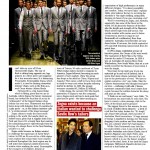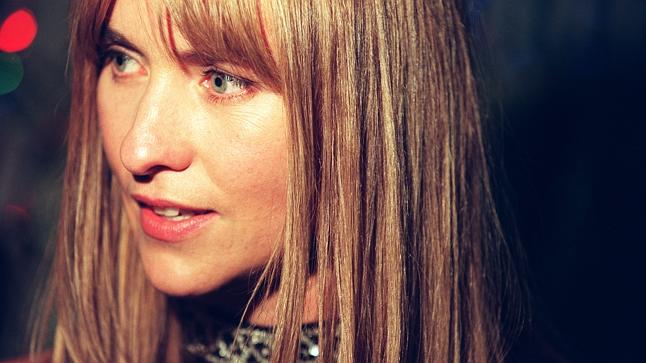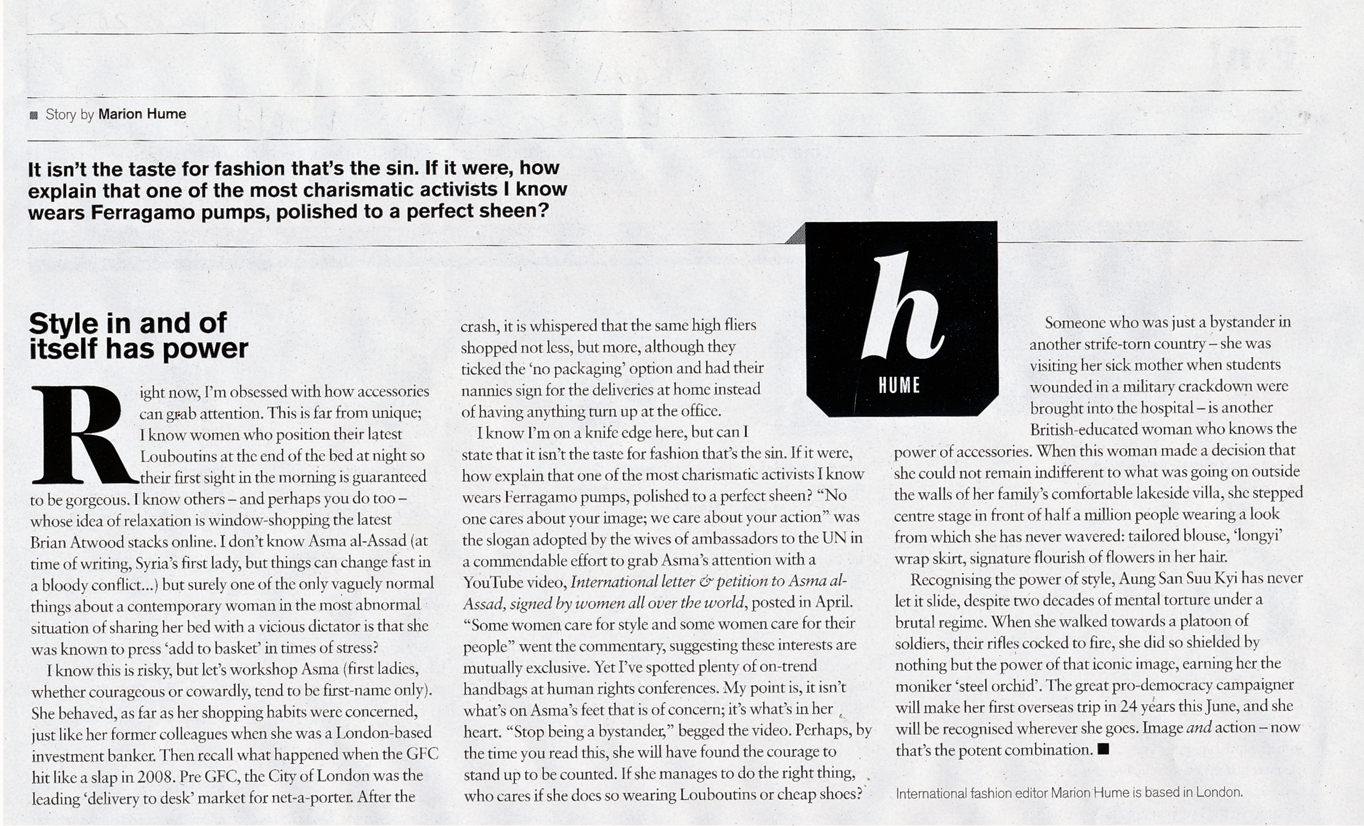The Start of Something New – Australian Financial review
Collette Dinnigan: The start of something new
Never play poker with Collette Dinnigan. I should state here that in years of knowing her, both as a designer and a friend, she’s never suggested a card game. But were she to do so, I’d decline. Goodness, can she keep things close to her chest.
Recently, I have seen quite a lot of Collette; at her Paris show, for afternoon tea, and then over drinks at Le Meurice she gave me her gorgeous new book (launched in Australia on Tuesday), many of the adventures within ones we shared. Her business grew as my fashion life in Australia began. Arriving in Sydney from London to edit Vogue, as I did in 1997, was a pretty lonely gig. Collette just plunged in and invited me home to dinner.
So when my colleague Katrina Strickland called seeking comment on Collette closing her business, I was stunned. Collette had just shown the freshest collection she’s done in years: genuinely lovely, bang on trend.
Close now? I haven’t been able to talk to Collette before writing this – the time difference from London and deadline didn’t allow. What follows is my guess of what might be happening.
What I know for sure is Collette is smart, ambitious, driven. Her husband Bradley, also in the business, is charming and strategic. Give up a career she has fought so hard for?
My hunch is that’s not what’s happening here.
Spending time looking for the right investor – not found – makes one examine a business. What went wrong? Perhaps this is a case instead of what to do right. Close stores? Why not, as rents and staff costs rocket. Bizarrely, Australian designers are online from overseas.
There’s a reason Matches Fashion – which grew to an e-commerce force from a store in south London – is bringing British designers on a “rock tour” of Australia. It is the same reason American retail giant Neiman Marcus is sending its creative director to meet the customers.
Last May, Mr Porter’s Jeremy Langmead was delighted to appear at The Australian Financial Review Bespoke conference because Australian men are the e-tailer’s second-biggest customers.
What astonished even Langmead was that the offer of three days’ free shipping after the event, announced from the Sydney Opera House stage, had a take-up over triple what he’d anticipated, to the tune of tens of thousands of dollars.
Who needs stores anyway?
MORE TO COME
Is Collette giving up altogether? I think she’s just pausing for breath before an even bigger next chapter. Her family is happiest at their organic farm down south.
Might this be the launch pad for a business like the UK’s Daylesford Organics? (Good food was important to Collette long before it was such a trend.) Maybe a Maggie Beer-meets-Donna Hay with seasonless, gorgeous, ethical clothes in the mix? And perhaps a really glorious collection of rural holiday rentals too, given Bradley has a background in hotels and she’s great at interiors?
Could this be the beginning of the business I longed for when I first arrived in Australia? One that encapsulates the uniqueness and makes the differences touchstones of chic – as Ralph Lauren did for America years ago?
The modern business model would be to sell that dream almost all online and have a gorgeous shop off-the-beaten track with places to stay to experience the lifestyle. If she is giving up a brand she’s fought for to bake cookies for the kids, she’ll bake those cookies into another even better Collette Dinnigan brand.
The Financial Times – Style In and Of Itself Has Power
Sacré Bleu – Australian Financial review
by Marion Hume
Hush hush, but have you heard the latest about cocagne? The source is limited but whispers are spreading through the French fashion crowd. Really, if you are planning to holiday in the snazziest summer enclaves in Europe next summer, (Cap d’Antibes, Ile de Re, St Paul de Vence….) you don’t want to miss out.
We are talking about something difficult to obtain but entirely legal of course. While you pronounce “cocagne” almost exactly like the marching powder which, some years ago, a supermodel allegedly put close to her nose, this column reaches you not from seedy late night London but from sun-drenched South West France, with its Medieval cities which grew rich thanks to the cocgane trade reaching every corner of the world.
What is cocagne? It’s about the size of a tennis ball and originally came with a distinct whiff of urine. In 15th century Toulouse, dealers built Medieval McMansions complete with blingy turrets and spiral staircases and probably tried to out-do each other with pimped-up ox carts too. The hit they sold was blue.
A cocagne is the solid, transportable form of a plant extract that releases blue dye. While abundant in nature, for centuries, blue was the trickiest hue to fix onto fabric. Your 12th century Game of Thrones warlord wasn’t wearing ecru because of a pre-Armani taste for beige but because no one had yet been able to take the taste for woad face paint and make it work for fashion. The breakthrough came when someone took the ordinary-looking plant called pastel, from which woad derives, pulped the leaves, dried them, fermented them in human urine, rolled them into balls then, about a year later, crushed these and hurled the powder into a vat of boiling water. When the offcuts from the loom were dipped into this brine, the cloth emerged a celestial blue.
So successful was the taste for pastel blue that by 1570, the pope decreed priests shouldn’t be seen in it as it was far too common. But the good times would end. Indigo – faster, cheaper – arrived from India. The French government tried to ban its import but by the mid 18th century, it was all over for the lords of cocagne. In turn, the 19th century saw indigo ousted in favour of synthetic dye, the 20th saw the pollution of rivers near European fashion factories. And so it came to pass that, by the 21st century, the poor of China started dying because dyeing had turned their water sources toxic. Those with a conscience are looking back to the environmentally-pure pastel of France.
A combination of university boffins plus eager artisans have been trying to bring pastel up to date for over a decade, the challenges, including finding an eco trigger for fermentation that does not whiff of the pissoir and making a labour-intensive process economically viable have taken time. First successes including (pee free) body products – soaps, lotions and the like – trumpeting the pastel plant’s antiseptic properties and labelled “Comptoir de Pastel” are now de rigeur in the chicest French holiday houses.
Now, at last, linen and cotton scarves dip-dyed a glorious Gallic blue are available via a completely sustainable reintroduction of a traditional artisanal trade and for around the 40 euro mark, making them viable additions to a holiday wardrobe. Gorgeous Gauls, who would never be seen dead out of darks while in Paris, are accessorizing their summer looks (white jeans, striped T-shirts – that chic cliche that keeps on looking good) with a swath of pastel blue scarf, worn either soft knotted at the neck, wafting in the evening breeze or even tied over an Eres swimsuit.
As far as I know, Pastel de Lectoure is the only producer to have launched an online source of pastel scarves with an English translation. Let the international trafficking of cocagne begin.





